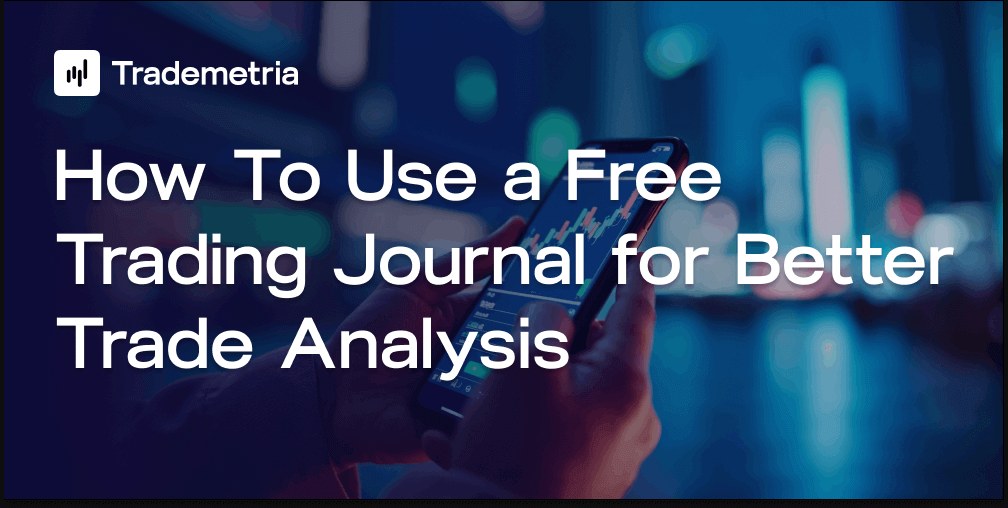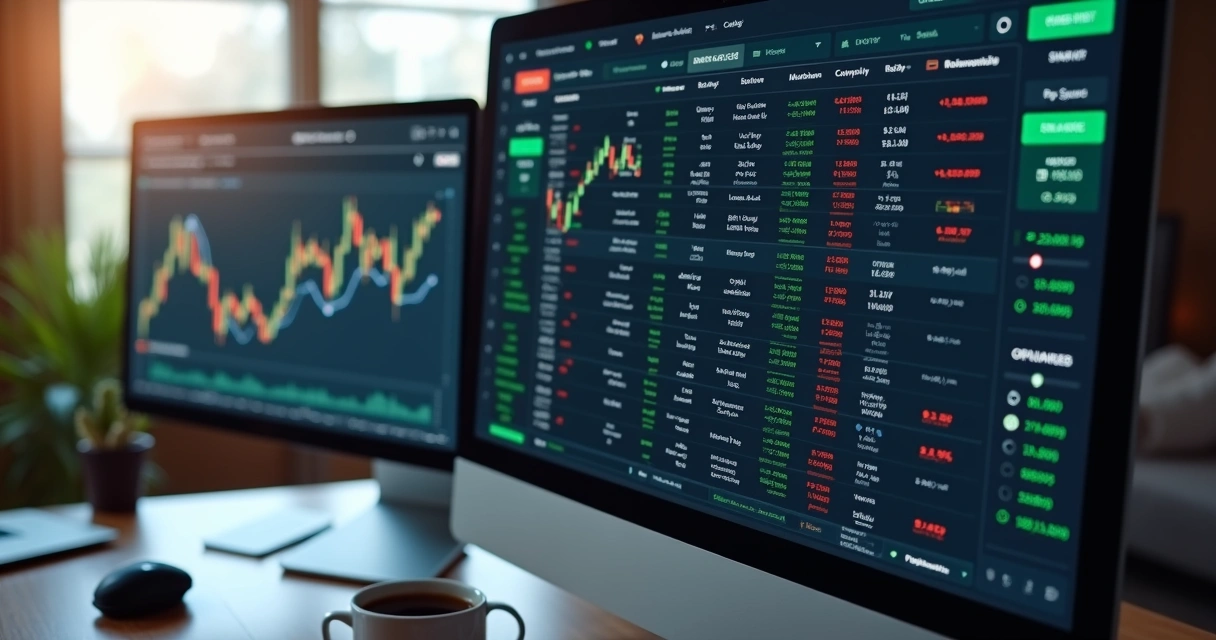How To Use a Free Trading Journal for Better Trade Analysis

Most traders begin their journey searching for an edge—some unique detail or trick to stay ahead. What many overlook, though, is the quiet power of a simple habit: keeping a trading journal. It's easy to think, "I’ll remember my trades," or "I know why I lost that one." Truth is, memories are short and market noise is loud. That’s where a free trade journal enters the picture.
What is a trading journal?
At its heart, a trading journal is a personal record. It’s not just a simple sheet with buy and sell points. It’s a chronicle of actions, thoughts, patterns, and results, showing you not just what you did, but how you felt, what you expected, and what actually happened.
Most consistent improvement comes from self-knowledge—recorded over time.
Every trader, whether just starting or managing a large portfolio, benefits from looking back. That’s why platforms like Trademetria make record-keeping not just easy, but also insightful, connecting data points you may not even notice while in the heat of trading.
Why is a trading journal helpful?
- Performance tracking: See your journey, not just your destination. Track wins, losses, and everything in between.
- Better risk awareness: Frequent mistakes and tiny oversights become visible trends, not mysteries.
- Strategy refinement: Spot hidden strengths and repeated weaknesses. Sharpen what works, cut what drags you down.
- Improve discipline: The act of writing (or typing) after every trade acts as a subtle brake pedal, making you pause and consider.
There’s an emotional side too. Some days, when things spiral, you need evidence that success is possible—that you’re learning, not just spinning your wheels. Your logbook gives you these reminders, captured in your own words and numbers.
How to set up your trading journal step by step
People often say they don’t know what to write, or what matters. Here’s a simple plan:
- Choose your toolThis can be a pen-and-paper notebook, spreadsheet, or a digital platform like the one offered by Trademetria. Each has its pros and cons—more on that soon.
- Decide what to record every timeDate and time: Never skip this. It helps you see if certain sessions (morning, late night) suit you better.
- Instrument/asset: Stocks, forex, crypto, options, or others.
- Direction: Were you long or short?
- Entry/exit price and time: Numbers don’t lie, but in the rush of clicking, they’re easily forgotten.
- Position size: This is central to understanding risk behavior.
- Stop loss and take profit (if set): Shows your planning, or lack of it.
- Result (win/loss, points or dollars): Record even the tiny ones.
- Notes: What did you see? What was your plan? Any news or events? Was your focus sharp or distracted?
- Emotions: Did you feel confident, nervous, angry, or bored? Over time, you’ll see which feelings lead to better trades.
- Enter each trade promptly: It’s tempting to postpone this until “later.” But memory fades, details blur, and some lessons only stick if written while fresh.
- Review periodically: Weekly or monthly, look for patterns. Some traders set a “journal review” time on Fridays right after markets close.
Making the journal more useful: patterns and insights
It’s one thing to jot down details. The real magic comes when you review past trades. Here are some things to look for during review:
- Serial winners and losers: Maybe your setups on Mondays run better, or you slip up in the afternoons.
- Emotional causes: Is revenge trading (jumping in after a loss) a trap? Are big wins followed by sudden, rash trades?
- Plan vs. impulse: Compare your pre-trade ideas to what you ended up doing. Did you follow your rules or chase noise?
- Market types: Maybe you perform differently when the market is trending hard versus flat.
Digital journals, like those on Trademetria, can automate this part, surfacing trends and giving you visual charts. This takes some guesswork out and, perhaps surprisingly, can help lower emotional stress over time.
Digital tools and sheets: a quick comparison
Should you handwrite, use spreadsheets, or pick a digital trade log? There’s no perfect answer, but here’s how they line up:
- Notebook: Personal, can jot emotions quickly, but hard to analyze over months or years.
- Spreadsheet: Good for numbers, customizable, but needs manual setup. Adding charts, calculating streaks, or tracking performance gets tricky as data grows.
- Digital platform (like Trademetria): Streamlines data import, offers ready-made visualizations, connects with broker accounts, and adds metric tracking. Some offer free entry levels, so you can start without a cost.
Choose the style you’ll actually stick with. Consistency beats complexity.
In my experience, some traders feel more attached to pen-and-paper, but eventually want the graphs or automation digital options bring. It’s okay to start basic and move up later.
On broker integration and importing trades
If you trade even semi-actively, manual entry gets tedious. Digital journals now let you import directly from broker accounts—saving time and cutting errors. Trademetria, for instance, connects with hundreds of brokers, allowing trades to move seamlessly into your journal after each session or day.

Importing not only saves you hours but also means your numbers match your actual results—no manual mix-ups. Plus, if you want to analyze multiple accounts or trading strategies, keeping all data together suddenly becomes simple.
Reports, analytics, and staying on target
Once you have a few weeks (or months) of journal entries, you’ll discover true value in reviewing active metrics. Here’s what a good journal lets you see:
- Win/loss ratios: Not just totals, but in contexts—by day, strategy, asset, or even time of day.
- Reward/risk calculations: See if positive trades are swamped by a few outsized losses.
- Drawdown and streaks: Long losing runs can be warning signs—especially if always on certain setups.
- Emotional notes matching results: Did your “gut feeling” really help, or just add noise?
The analytics sections offered by a platform like Trademetria take your raw performance data and output charts, graphs, and summaries. Over time, this lets you benchmark your growth and see what's improving. Personally, nothing kept me more focused than watching my average losses shrink as I adjusted my risk per trade, week by week.
Tactics for building healthy journal habits
- Set a regular schedule: Block ten minutes after close, or midday, but always review at the same time.
- Keep it simple early on: Fewer fields mean less friction. Start with big things (entries, exits, results), then expand as you grow.
- Reward yourself for sticking to it: Maybe a small treat after every week of regular journaling.
- If you miss a day, don’t quit. Gaps happen. Pick up from where you left off.
- Be honest, even when it hurts: The journal is for self-growth, not for show.
Some common pitfalls
- Skipping the emotional/psychological notes. Numbers are half the story. What you feel guides your decisions too.
- Only recording wins. The ugly losses offer more insight than hot streaks.
- Making fields too complex early on. If journaling feels like homework, you won't keep it up.
- Not reviewing trends. Writing without reflection misses the whole point.
So, should you keep a free trading journal?
If you want to grow, build discipline, keep your ego in check, and discover your best edge, the simple act of record-keeping will take you further than you think. Whether you start with a notepad or jump straight into an integrated digital solution like Trademetria, the result is the same: better awareness leads to better trading.
Why not try it? Take a moment to see what a well-designed platform like Trademetria can add to your process—especially with the chance to test it at no cost. Your next step could be the habit that transforms your trading. The best way to know is to start.
Frequently asked questions
What is a free trading journal?
A free trading journal is a tool—sometimes an app, spreadsheet, or online platform—where traders can record each trade they make along with details like entry and exit points, size, notes, and emotions. It lets traders review their actions to spot strengths, struggles, and improve decision-making. Trademetria offers a version that lets users start without paying, making the journaling habit easier to adopt.
How can I start using one?
You can start with paper, a spreadsheet, or create an account on a digital platform like Trademetria. Begin by logging every trade, noting details such as date, asset, entry, exit, result, and mental state. Over time, revisit your entries to find trends and adjust your strategy. Simple setup is often best until you develop the habit.
Are free journals safe for my data?
If you use a reputable platform, yes, your data should be secure and kept private. Always check privacy policies and look for features like data encryption when using an online service. If you stick to spreadsheets or notes on your device, make sure you back up your records and protect files with passwords if possible.
Where to find the best free trading journal?
Digital solutions like Trademetria stand out for offering a balance of usability, analytics, and support for multiple asset types. Look for a platform that fits your trading style, lets you import data easily, view charts, and gives you freedom to grow—all without hidden fees or commitments at the start.
Is it worth using a free trading journal?
Absolutely. Even if you’re a beginner or trading with small stakes, the lessons learned from tracking and reviewing your trades can prevent larger mistakes later. A no-cost journal means there’s no barrier to starting—you gain self-knowledge that can make a real difference.

